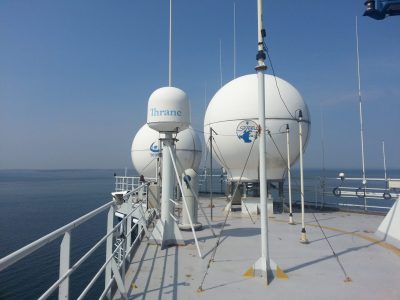Industries
Marine
The Marine environment can be challenging when it comes to EMC. The failures caused by EMC interference are widely misinterpreted and misunderstood. EMC failures will often get undiagnosed and remain un-explained failures.
WEMEC can ensure that fully integrated systems get tested in their intended environment to minimise unreliability of propulsion and navigation equipment or loss of communication systems.
Using harmonised standards, we can ensure full compliance with the Marine Equipment Directive (2014/90/EU) or EMC Directive (2014/30/EU).

The main goal for the EMC directive when it comes to Marine Vessels:
- Is to ensure that the electromagnetic disturbance produced by apparatus (e.g. vessel) do not affect the correct functioning of another apparatus (e.g. another vessel) as well as radio and telecommunications networks and electrical power distribution networks.
- Is to ensure apparatus has an adequate level of intrinsic immunity to electromagnetic disturbances to enable it to operate as intended.
We are fully versed when managing and supporting the following Marine standards:
EN 60945 – Maritime navigation and radiocommunication equipment and systems – General requirements – Methods of testing and required test results.
EN 55012– Vehicles, boats and internal combustion engines – Radio disturbance characteristics – Limits and methods of measurement for the protection of off-board receivers
IEC 60533 – Electrical and electronic installations in ships – Electromagnetic compatibility
Note: The first two standards include requirements for the EMC of marine electrical and electronic equipment. EN 60945 is a harmonised standard under the EMC Directive and is equivalent to IEC 60945 Edition 3. It should be expected that equipment which is intended for the marine environment will be compliant with this standard and its CE Marking declaration of compliance will reference it accordingly. However the boat as a whole cannot be CE Marked against this standard.
The third standard does not apply to recreational craft but to ships that are covered by IMO Resolution A.813 (19):1995, General requirements for electromagnetic compatibility (EMC) for all electrical and electronic ship’s equipment. It is not a harmonised standard under the EMC Directive. Nevertheless it does give guidelines and recommendations on the measures to achieve EMC in the electrical and electronic installations of equipment groups that are found on recreational craft.
EMC Marine Services Performed by WEMEC.
- Product EMC design analysis and design risk mitigation Affect product design at initial design validation stage. This results in the low risk end solution.
- EMC test planning, test support, report analysis Successful EMC testing is possible through effective EMC test plan generation. This, along with support during the test programme and final report analysis, ensures our clients avoid increased cost and delays in programme delivery.
- Construction of Technical Files The construction of the mandatory “Technical File” can be delivered efficiently by working with the relevant Notified Bodies and Flag States.
- EMC component to ship integration analysis Identifying equipment’s EMC limitations and threats from the ship. Identify specific environments with worst case risk analysis dependant on single failure. Generate risk registers in order to dictate best practise solutions and management.
- RADHAZ surveys identify safe working zones in the presence of communication and navigational transmitters; e.g. VHF, HF, Radisense, Satcom, Radar (X or S Band).
- Communication range trials Communication range trials allow for theoretical range performance combined with sea trials to ensure effective clear communication with minimised interference. Antenna type, location and installation are assessed along with collocated potential sources of interference.
- EMC Sea Acceptance Trials (SAT) and Habour Acceptance Trials (HAT) are key activities which allow for the compliance of systems and bespoke equipment in situ. Full system evaluation are completed by looking at individual sub-subsystem integration. Possible failure mechanisms are recreated with a solution to prevent real life occurrence.
.



